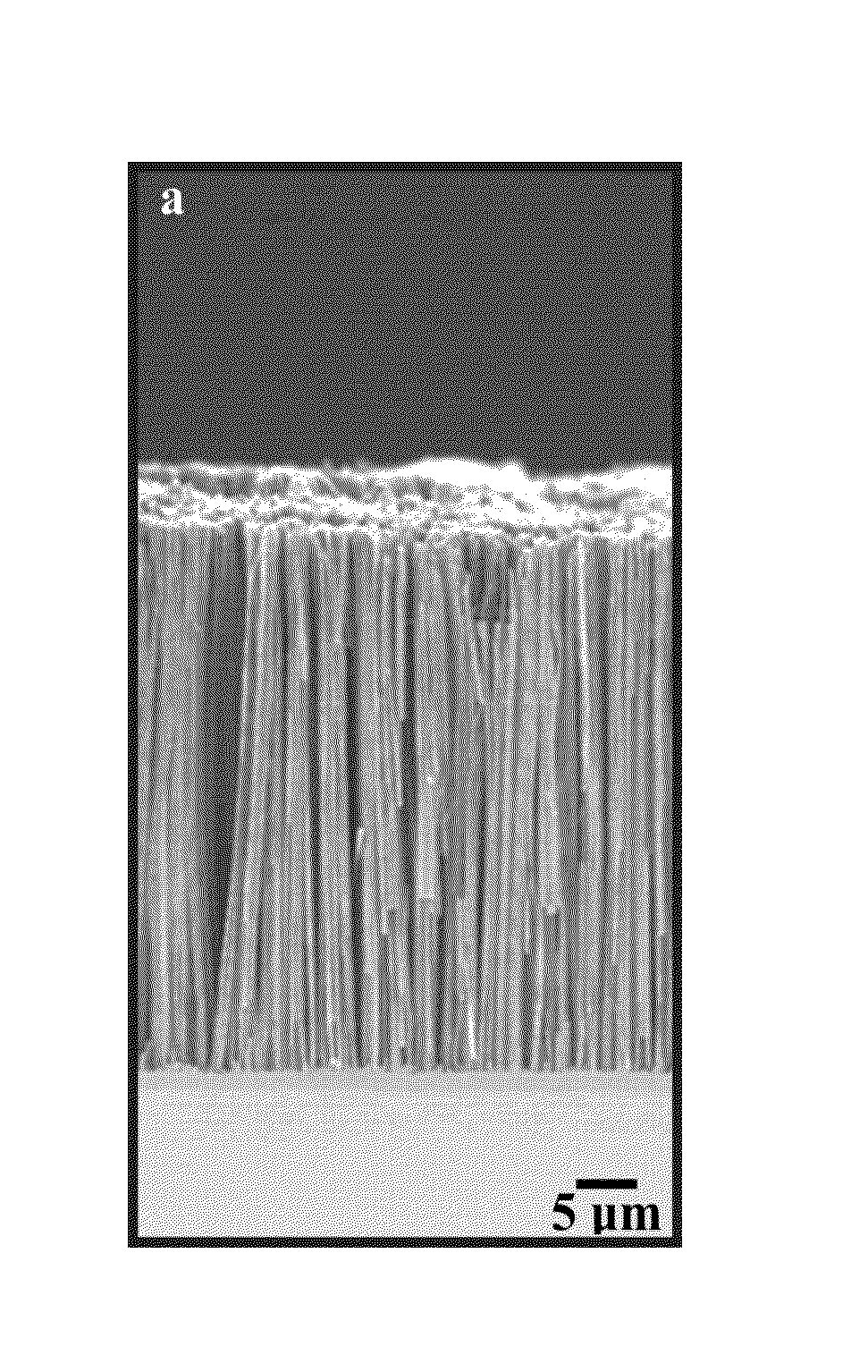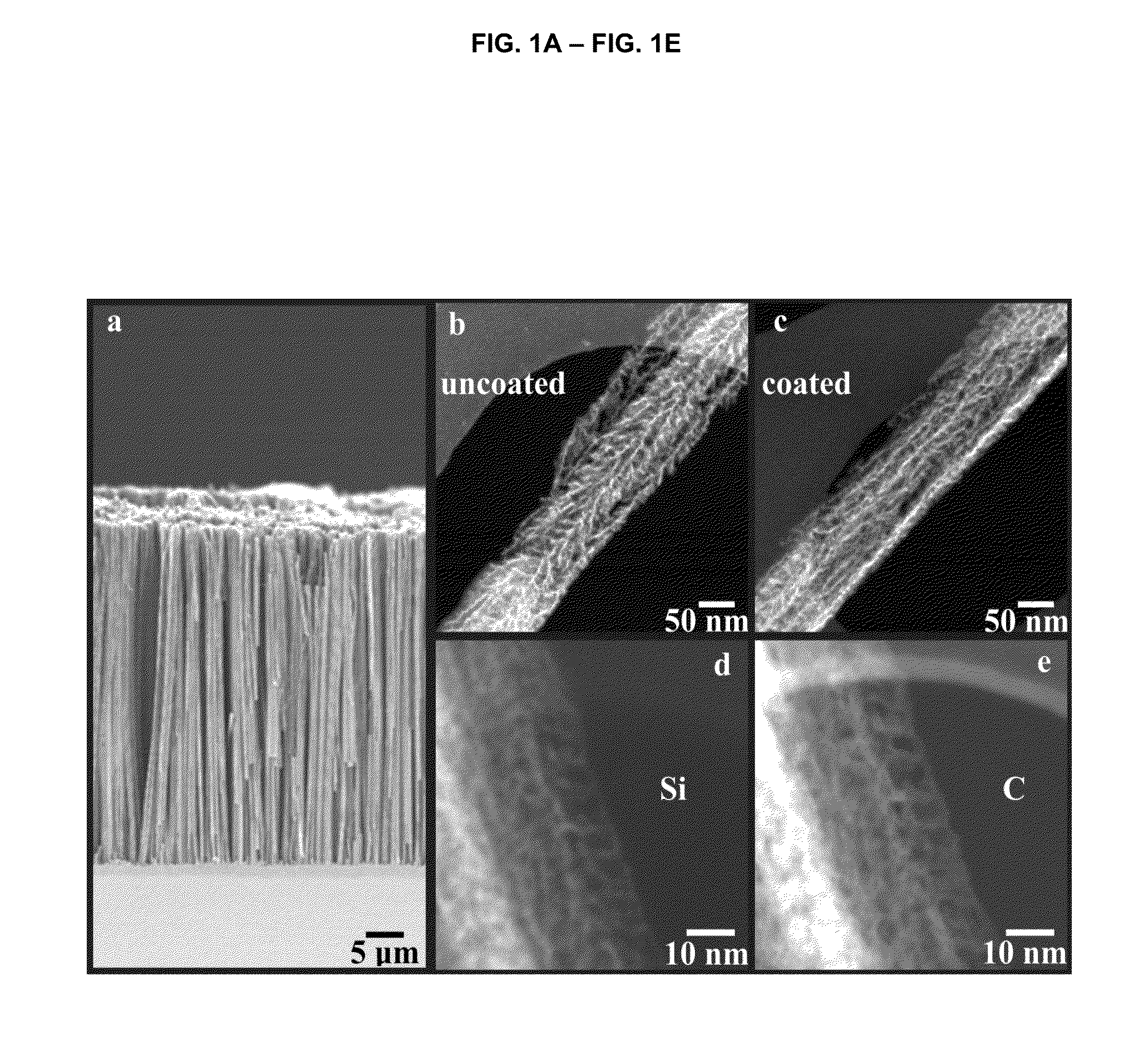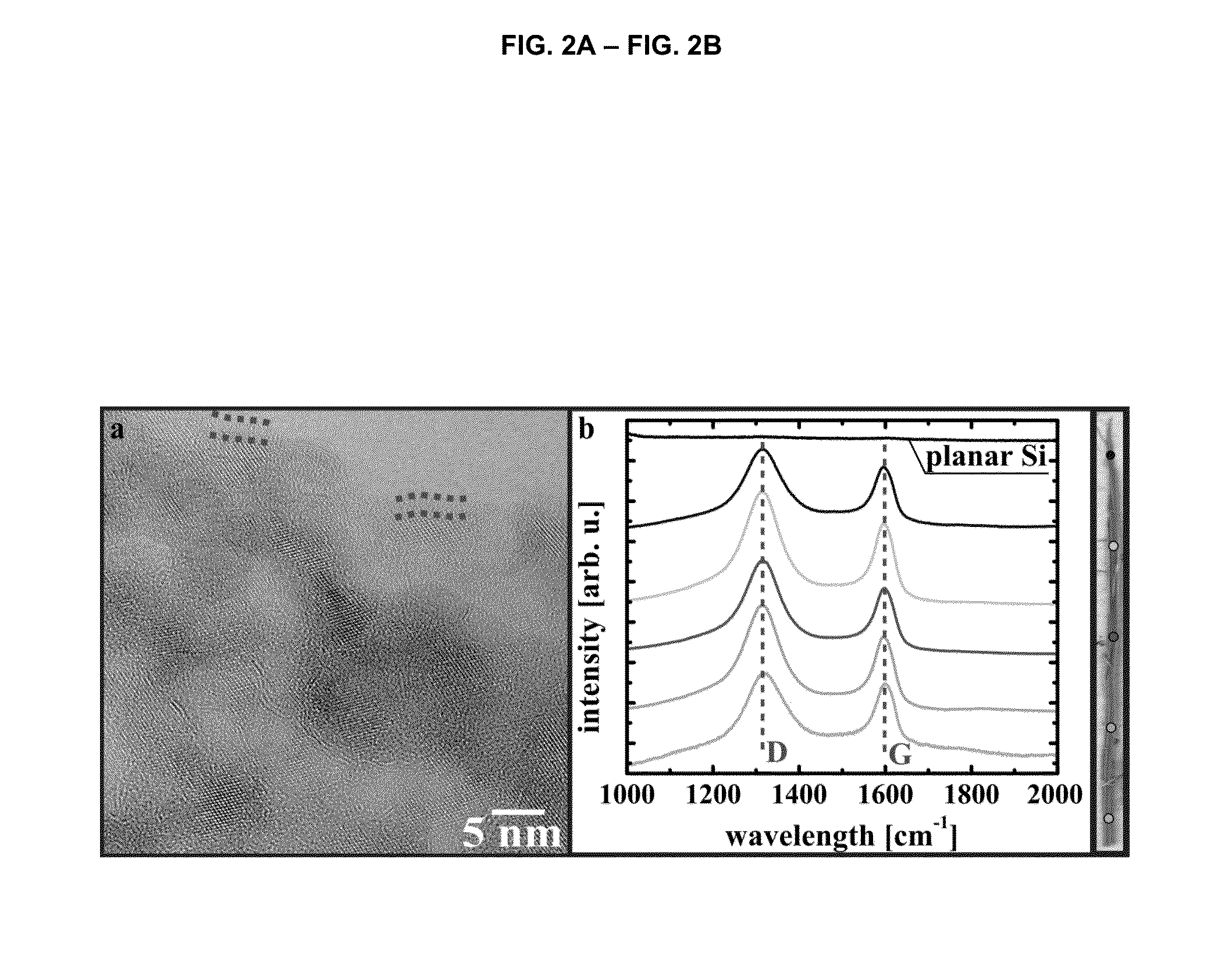Passivated porous silicon nanowires
a porous silicon nanowire and passivating technology, applied in electrolytic capacitors, coatings, transportation and packaging, etc., can solve the problems of high cost and cumbersome approach, high cost and cumbersome configuration, and high reactiveness of porous nanowires, so as to achieve the effect of reducing si degradation
- Summary
- Abstract
- Description
- Claims
- Application Information
AI Technical Summary
Benefits of technology
Problems solved by technology
Method used
Image
Examples
example 1
Materials and Methods
[0066]Porous SiNWs were synthesized following the previously published method8. 1×1 cm2 (1-5 mΩ·cm) silicon (100) coupons were cleaned by successive sonication in acetone, isopropyl alcohol and de-ionized water. The coupons were then exposed to UV generated ozone for 5 minutes and any silicon oxide was subsequently removed by a 5 minute etch in 48% hydrofluoric acid (HF). The unpolished sides of the samples were coated with a thin nylon coating in order to protect them from etching. A ˜2 mm wide strip of Si on the front side of the samples was also protected to provide an electrical contact point. Samples were then immersed in the oxidant / etchant bath consisting of 5M HF and 20 mM AgNO3, equilibrated in a 50° C. heating bath, for various lengths of time to produce different length wire arrays. Samples were then rinsed in de-ionized water and residual silver was removed by a HNO3 (˜3.5M) etch for 15-45 minutes. Drying was performed in a critical point dryer (Tous...
PUM
| Property | Measurement | Unit |
|---|---|---|
| length | aaaaa | aaaaa |
| thickness | aaaaa | aaaaa |
| diameter | aaaaa | aaaaa |
Abstract
Description
Claims
Application Information
 Login to View More
Login to View More - R&D
- Intellectual Property
- Life Sciences
- Materials
- Tech Scout
- Unparalleled Data Quality
- Higher Quality Content
- 60% Fewer Hallucinations
Browse by: Latest US Patents, China's latest patents, Technical Efficacy Thesaurus, Application Domain, Technology Topic, Popular Technical Reports.
© 2025 PatSnap. All rights reserved.Legal|Privacy policy|Modern Slavery Act Transparency Statement|Sitemap|About US| Contact US: help@patsnap.com



